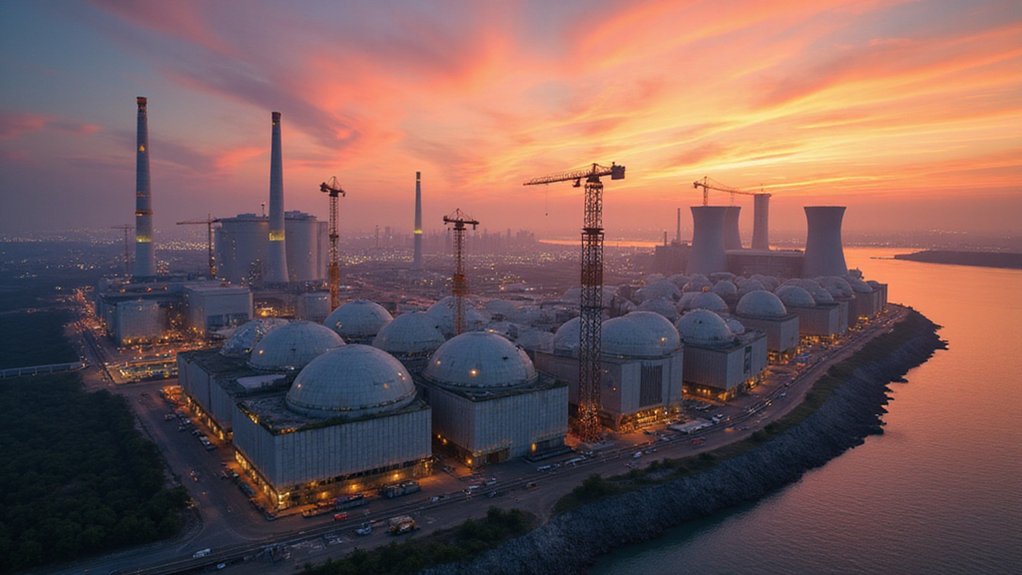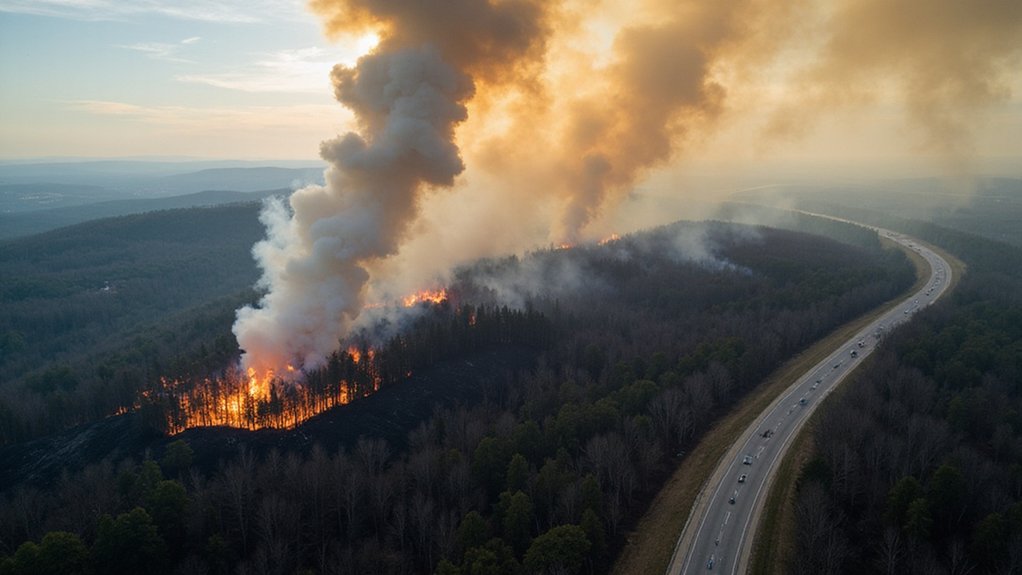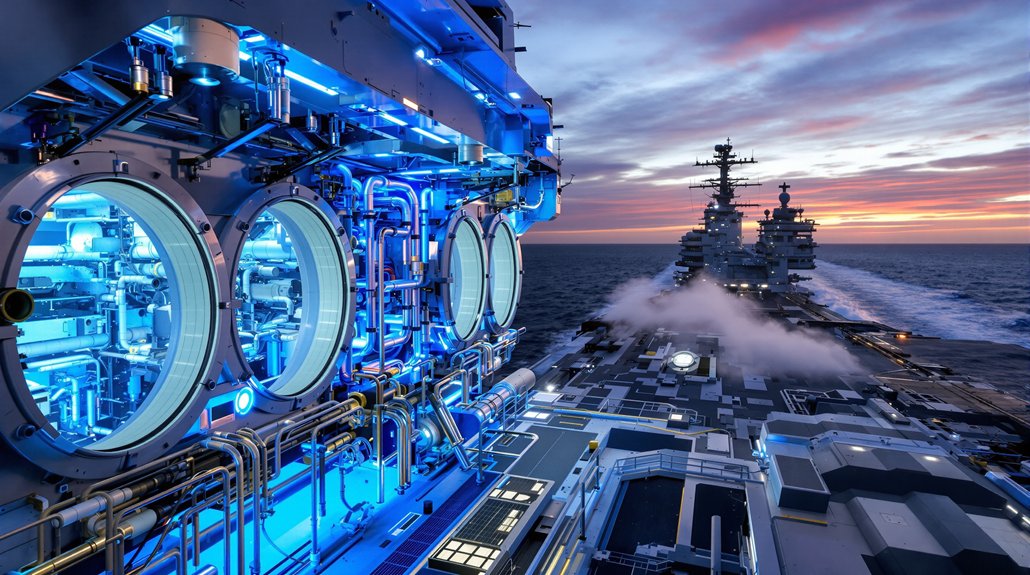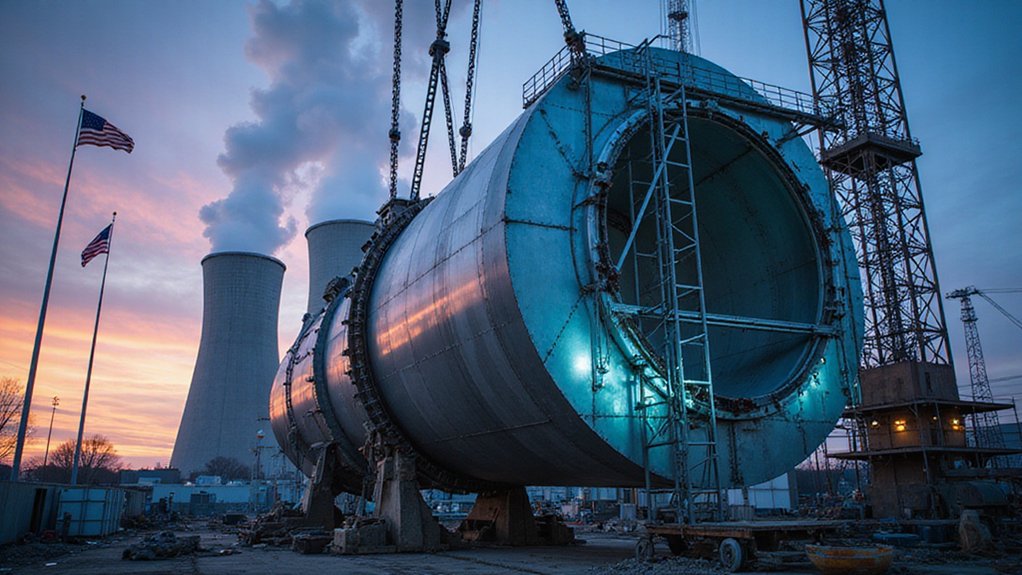China just greenlit 10 new nuclear reactors with a massive $27.4 billion investment. Eight will use homegrown designs, while two rely on American tech. Unlike Western projects that drag on forever, Chinese plants get built in under seven years. They’re targeting 200 gigawatts by 2035, with plans to build 6-8 reactors annually. Pretty ambitious for a country juggling energy security and AI power demands. The nuclear renaissance is real – and China’s leading the charge.
Ambition on an atomic scale. China just greenlit 10 new nuclear reactors with a $27.4 billion price tag, spreading them across five coastal provinces like collector’s items. Eight will use their homegrown Hualong One design, while two are based on American AP1000 technology—though China’s probably not sending thank-you cards to Washington. This nuclear shopping spree is part of a bigger plan to build the world’s largest nuclear fleet before 2030, adding to their current arsenal of 57 reactors.
When China decides to build reactors, they don’t mess around. Nearly all their nuclear projects since 2010 have gone from blueprints to splitting atoms in seven years or less. Compare that to the West, where nuclear plants age like fine wine—except nobody ordered wine, they ordered electricity.
And they’re not just fast—90% of their plant technology is now homemade, including that shiny new fourth-generation reactor at Shidaowan-1. First of its kind in the world. Not too shabby.
The numbers are staggering. China wants 200 gigawatts of nuclear capacity by 2035. That’s a lot of zeros. They’ve already got 30 more reactors under construction and plan to crank out 6-8 new ones annually. Do the math: that’s 150 new reactors between 2020 and 2035. The Americans? In their rearview mirror.
This isn’t just about bragging rights. Nuclear power means energy security, less reliance on fossil fuels, and keeping those data centers humming as AI eats more electricity than a teenager raids a refrigerator. China’s aggressive nuclear expansion will require investment of 370 to 440 billion dollars to achieve its ambitious long-term goals. With a focus on clean energy transition, China expects electricity to make up at least 10% of all transport energy consumption by 2027.
Plus, it’s their ticket to the energy export club, with Chinese reactors potentially popping up along Belt and Road countries faster than convenience stores. China’s aim to double its nuclear capacity within six years aligns with the global nuclear renaissance forecasted by the International Energy Agency.
Safety concerns? They’ve got those too. But China’s betting big that their nuclear future is both clean and profitable. The atom, it seems, speaks Mandarin now.
References
- https://www.caixinglobal.com/2025-04-29/energy-insider-china-approves-10-nuclear-reactors-green-exports-grow-despite-tensions-102315123.html
- https://www.nuclearbusiness-platform.com/media/insights/chinas-nuclear-power-program-a-blueprint-for-global-competitiveness
- https://itif.org/publications/2024/06/17/how-innovative-is-china-in-nuclear-power/
- https://www.ans.org/news/article-6170/wholeofgovernment-approach-suggested-for-us-nuclear-to-compete-with-china/
- https://www.nucnet.org/news/us-and-china-to-lead-growth-in-nuclear-power-for-data-centre-supply-4-4-2025








